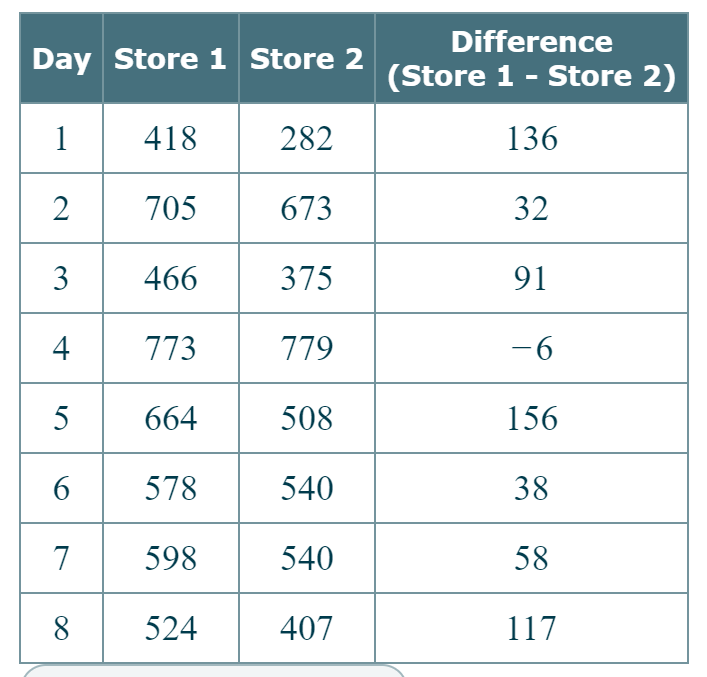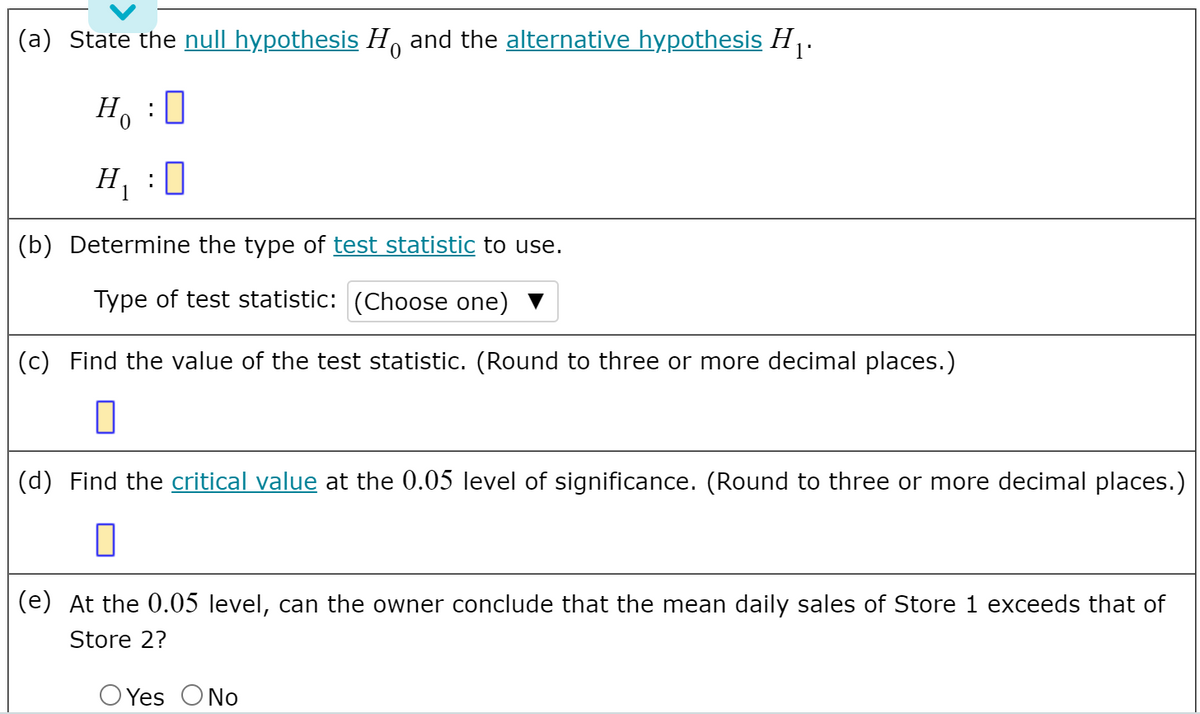The owner of a chain of mini-markets wants to compare the sales performance of two of her stores, Store 1 and Store 2. Though the two stores have been comparable in the past, the owner has made several improvements to Store 1 and wishes to see if the improvements have made Store 1 more popular than Store 2. Sales can vary considerably depending on the day of the week and the season of the year, so she decides to eliminate such effects by making sure to record each store's sales on the same sample of days. After choosing a random sample of 8 days, she records the sales (in dollars) for each store on these days, as shown in the table below. Based on these data, can the owner conclude, at the 0.05 level of significance, that the mean daily sales of Store 1 exceeds that of Store 2? Answer this question by performing a hypothesis test regarding μd (which is μ with a letter "d" subscript), the population mean daily sales difference between the two stores. Assume that this population of differences (Store 1 minus Store 2) is normally distributed. Perform a one-tailed test. Then complete the parts below. Carry your intermediate computations to three or more decimal places and round your answers as specified. (If necessary, consult a list of formulas.)
Contingency Table
A contingency table can be defined as the visual representation of the relationship between two or more categorical variables that can be evaluated and registered. It is a categorical version of the scatterplot, which is used to investigate the linear relationship between two variables. A contingency table is indeed a type of frequency distribution table that displays two variables at the same time.
Binomial Distribution
Binomial is an algebraic expression of the sum or the difference of two terms. Before knowing about binomial distribution, we must know about the binomial theorem.
The owner of a chain of mini-markets wants to compare the sales performance of two of her stores, Store 1 and Store 2. Though the two stores have been comparable in the past, the owner has made several improvements to Store 1 and wishes to see if the improvements have made Store 1 more popular than Store 2. Sales can vary considerably depending on the day of the week and the season of the year, so she decides to eliminate such effects by making sure to record each store's sales on the same sample of days. After choosing a random sample of 8 days, she records the sales (in dollars) for each store on these days, as shown in the table below.
Based on these data, can the owner conclude, at the 0.05 level of significance, that the mean daily sales of Store 1 exceeds that of Store 2? Answer this question by performing a hypothesis test regarding μd (which is μ with a letter "d" subscript), the population mean daily sales difference between the two stores. Assume that this population of differences (Store 1 minus Store 2) is
Perform a one-tailed test. Then complete the parts below. Carry your intermediate computations to three or more decimal places and round your answers as specified. (If necessary, consult a list of formulas.)


Trending now
This is a popular solution!
Step by step
Solved in 2 steps









